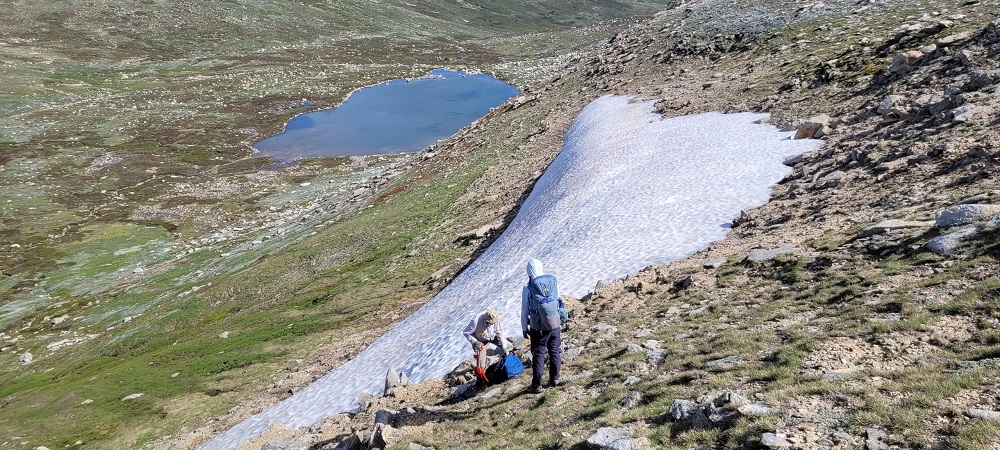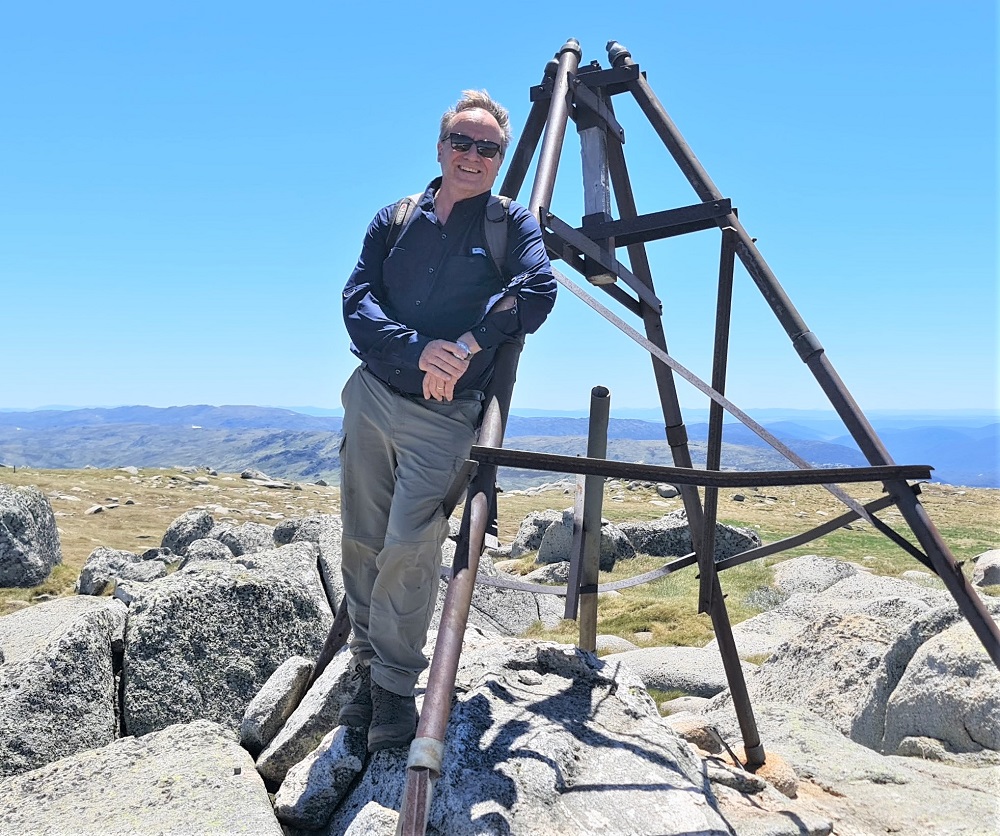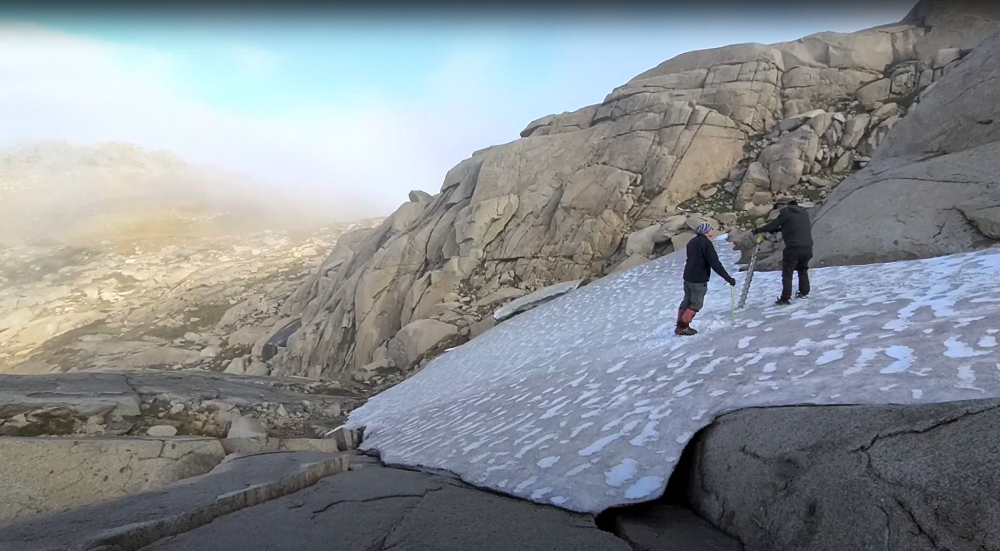11 May 2023: Semi-perennial snowpatches in Australia’s Snowy Mountains are now melting two weeks earlier than they did 45 years ago, says University of Canberra researcher Phil Campbell.
Formed from the winter accumulation of snow on the sheltered slopes of our highest mountains, snowpatches are the icy remnants of the previous winter’s snow cover, which often last well into the following summer.

Pursuing his PhD with the University’s Faculty of Science and Technology, Mr Campbell is using a combination of satellite imagery and extensive fieldwork to investigate the semi-perennial snowpatches found in the Snowy Mountains of New South Wales.
The semi-perennial snowpatches strongly influence the rare plant communities associated with them. They also subtly change the landscape in which they are located, through a range of geomorphological processes such as nivation (erosion of the ground, due to alternate freezing and thawing).
“Using satellite data from 1978, the average melt date of the last snowpatch has moved from late in the tenth, to late in the eighth week of the calendar year,” Mr Campbell said.
This year, three snowpatches in the Snowy Mountains have survived from winter to winter. Once a common occurrence, this is increasingly rare and the first time in 26 years that researchers have seen this happen in Australia.

“Snow surviving until the next winter has occurred just five times since 1978, in 1987, 1992, 1993, 1997, and now in 2023. The changes we are seeing are in line with the reduction in the winter snowpack due to global warming, and a key reason the dependent Snowpatch Herbfield ecological communitywas listed in 2016 as critically endangered,” Mr Campbell said.
In 1996, Australian National University Emeritus Professor Dr Ken Green, one of Mr Campbell’s Doctoral supervisors, commenced an unbroken series of 27 summers scanning the mountain tops around Mt Kosciuszko, and surveying 26 snowpatches monthly, to record which were still visible.
Professor Green said that while snowpatches occupy only a tiny portion of our highest mountains, they play a disproportionately important role in the alpine environment.
“As snowpatches cover the ground for much of the summer, only the hardiest plants can survive being buried under them and still find the time to reproduce after they melt,” Professor Green said.
“During the drier summer months, snowpatch meltwater hydrates downstream plant communities. The snowpatches are also able to shift rocks and soil, sculpting the ground on which they sit, and creating hollows and small ramparts of eroded material.
“Our snowpatches, and the unique Snowpatch Herbfield ecological community they support, are already at the top of our highest peaks, and in a warming world, there is nowhere for them to go – placing them at an extremely high risk of being lost forever.”

According to Professor Green, the Australian experience is being repeated globally in other mountain environments, with Scottish snowpatch researcher Iain Cameron drawing upon over 300 years of records to track changes in Highland snowpatches. The environment in Scotland’s Highlands is similar to Australia’s alps, and Mr Cameron has been sharing data and insights with the Australian researchers.
“In the Scottish Highlands, providing snow in the middle of summer was a condition of land ownership and frequently mentioned in records of the time. Until late last century, snow rarely failed to last until the next winter. Now, the Australian experience of snowpatches melting out during summer and autumn is becoming increasingly common,” Mr Cameron said.
“Although occupying just a few square kilometres of the vast Australian landmass, our semi-perennial snowpatches are an iconic and essential part of the alpine landscape. This research will provide useful data to help preserve this unique landscape for future generations,” Mr Campbell added.
Interested in contributing to Mr Campbell’s research? If you have dated photos of the alps in summer and autumn, please scan and send them through to u3259855@uni.canberra.edu.au. They’ll be incorporated into his research to help build a clearer picture of what’s happening to Australia’s endangered snowpatches.


